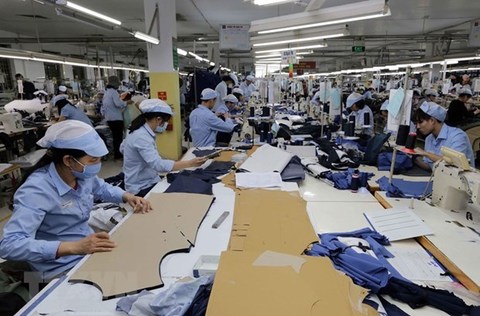
In the first 10 months of this year, Viet Nam gained a trade value of $537.31 billion.
With 17 free trade agreements (FTAs) whose negotiations have been completed or underway, Viet Nam has become an open economy with a trade to GDP ratio of up to 200 per cent.
According to the Agency of Foreign Trade under the Ministry of Industry and Trade (MoIT), Vietnamese firms have maximised advantages to boost exports and penetrate new markets.
Export goods have also been gradually changed to increase the proportion of value-added products, well-processed products, and hi-tech products.
The country’s total trade value rose from US$84.7 billion in 2006 to $545.3 billion last year. In the first 10 months of this year, the figure was $537.31 billion.
Viet Nam has always recorded a trade surplus, from $1.77 billion in 2016, to $2.1 billion in 2017, $6.8 billion in 2018, $10.9 billion in 2019 and $19 billion in 2020.
Of which, the export value of processed industrial goods has increased from 80.3 per cent in 2016 to 85.2 per cent last year.
The number of goods items with export value of over $1 billion has increased from 28 items in 2016 to 31 items in 2020.
Moreover, the free trade agreements have also contributed to Viet Nam's fast and sustainable export development, reducing dependence on one or a few markets.
Deputy Minister of Industry and Trade Tran Quoc Khanh cited a report by the WTO last year as saying that among the top 50 merchandise traders, Viet Nam recorded the biggest increase in the world's rankings, leaping from the 39th place in 2009 to the 23rd position in 2019.
The numbers reflect that Viet Nam was an open economy after joining the WTO and seriously realising its commitments, he stressed.
Moreover, the signing and implementation of FTAs helped the country attract more foreign direct investment (FDI), creating momentum for the national economy, the official added.
According to Khanh, it is the result of implementing many policies on innovation and restructuring the economy associated with growth model innovation for a long period, improving productivity and amending regulations.
Besides that, there is the process of improving the business and investment environment towards modernity and transparency to create fair competition for businesses.
However, since Viet Nam has integrated into the global market, its export growth has been fast but not steady and very vulnerable.
Moreover, local businesses have mainly processed export products or been trade agencies. Foreign direct investment (FDI) enterprises are also adapting and taking the advantages of FTAs better than Vietnamese enterprises.
The products with fast export growth rate and large export volume still have limitations in terms of productivity, area and exploitation capacity, such as agriculture, fishery and mineral products or depend on imported technology and raw materials, such as textiles, leather and footwear.
At the same time, the number of trade remedy investigation cases against Vietnamese exports has also increased.
To support businesses, Ngo Chung Khanh, Deputy Director of the MoIT’s Multilateral Trade Policy Department, said apart from reducing administrative procedures, the ministry would continue communication work to raise domestic firms’ awareness of the FTAs.
The ministry would speed up the building of the FTA Portal (FTAP), he said, adding that more than 20 ministries and agencies would join a working group to operate and upgrade the portal.
Deputy Minister Khanh affirmed that Viet Nam would further promote trade policies comprehensively and synchronously to boost economic development in tandem with sustainable development.
Viet Nam would work harder to effectively implement the present international commitments and FTAs, while seeking potential partners to conduct negotiations on new FTAs, thereby helping to expand trade ties in the future, he said.
Source: VNS